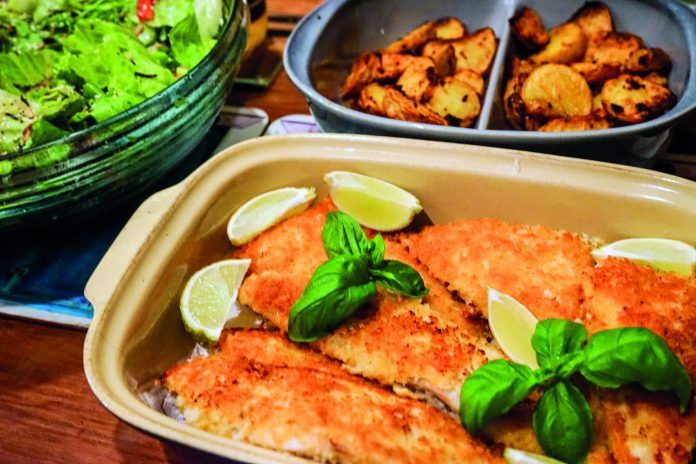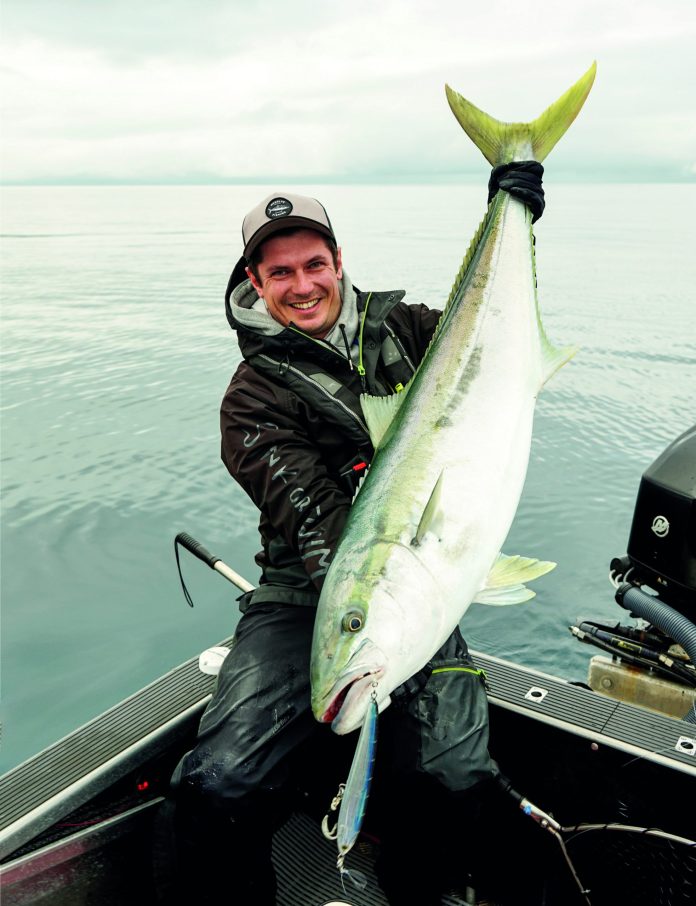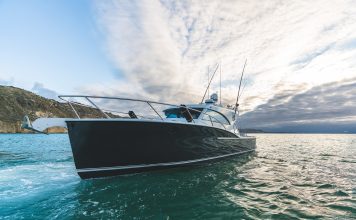If the fish is quite modest in size and well hooked, it should be possible to lift it into the boat by holding the lure or trace. However, bigger fish will require a net or possibly even a gaff. This article deals with boating fish with your hands or a net – we will look at gaffing next time.
‘Handy’ tips

• If using bait on a ledger rig, sliding sinker or strayline rig, grab the line as close to the fish as possible and lift it smoothly on board. Resist the urge to jerk larger fish over and into the boat, as this increases the strain on the line, snapping it, or the hook could rip free.
• When fishing lures from smaller boats where you’re close to the water, it’s often possible to use the lure as a handle or to grip to lift fish in. Take care though if the lure has more than one hook, particularly when handling kahawai and rat kingfish, as they are strong, vigorous fish that thrash around a lot.
• Knife-type jigs are especially easy to grab, but if a good-sized kingfish is attached, it pays to hold the fish’s tail with your other hand to spread the weight and control fish during the landing procedure. Soft-bait jig-heads can also be grabbed between your thumb and forefinger, but be careful to keep your fingers clear of a snapper’s crushing teeth!

• Further, for undersized which must be released, once the head is under control, slide your other hand down its body, closing the dorsal spines. It’s now possible to gently pin the fish against the hull at the waterline for de-hooking. (I find a pair of light fishing gloves really helps when handling fish this way, well-wetted prior to holding any fish destined for release.)
• If a large fish comes to the boat and there’s no net or gaff, don’t panic. Snapper should be left in the water until their struggles subside. Now grab the leader for some control before slowly slipping your hand down the underside of the fish until just past the gills. When the gills open, slip your thumb or fingers under the gill covers and hang on firmly. Obviously this tactic is used for fish you wish to keep, as it can damage the gills. There is always a slight chance you could cut your fingers on the gill-arch’s razor-sharp pre-operculum and operculum (some people refer to these as gill rakers, incorrectly), which are situated in this area.

• Even quite big kingfish can be boated using a thumb lock. This involves waiting for the subdued king’s mouth to open, then simultaneously placing your thumb inside its mouth and your fingers on the outside. You might need to hold the tail of larger specimens with your other hand, depending on your finger strength. It’s also possible to slip your hand inside the gills for a more secure hold, although you risk damaging the gills if you don’t know what you’re doing.
• It’s not advisable to lift soft-mouthed fish such as john dory, koheru and trevally on board by the line, as they will frequently rip free, especially if the hooks are small. Use a net.
Net worth

• When choosing a net, get the biggest that will fit somewhere in your boat – or even not fit anywhere – a net is a vital item of tackle.
• Make sure the handle is long enough to reach the water. Some handles are designed to fold, or to slide up into the net hoop for more compact storage. However, keep in mind that triangular folding nets are often not as strong as more rigid designs.
• Although stainless-steel net hoops tend to be strong and very rust-resistant, they are also very heavy. For that reason
I prefer landing nets made with heavy-duty aluminium hoops, as they are lighter and easier to sweep through the water. However, not all of them are up to lifting heavy weights without deforming or breaking, so refer to Net Techniques to prevent this occurring.

• Nets with large-meshed, heavy-duty rubber net bags are recommended. These are less likely to harm any fish you want to release, and the netting is less likely to snag your hook-rig or catch and damage a fish’s fins. Small hooks entangled in a net bag can be very frustrating.
• A grippy handle is advisable, as is a lanyard to loop around one’s hand – it can make the difference between losing everything and landing a very worthwhile fish.
Net techniques
• When a fish is boatside and needs to be netted, the main thing to remember is that fish don’t have a ‘reverse gear’. So be a little patient. Wait with the net out of the water but near the surface until the angler guides the fish towards you with the rod, or the fish swims the right way. Then, when the fish is on or near the surface and committed to the direction, smoothly push the net into the water just in front of the fish, moving it towards and under the fish so that it swims into the net headfirst. Slashing the net at fast moving, deep swimming fish is a recipe for disaster, so ignore any desperate cries until you feel it’s the right time to strike.

• When lifting especially big fish with the net, don’t use the handle as a lever – it could easily bend and/or snap during the lifting process. Instead, grip the handle lower down so the leverage is reduced or reach down and grip the hoop (and net bag) in both hands to bring the fish on board.
• If the fish is too big for the net, it’s not the end of the world. First, wait for the fish to tire, then scoop the net you have over its head and as much of its body as possible, before grabbing the tail, and holding the two together, lifting it all on board!
But you could have avoided all that anxiety and the demands upon your dexterity by having a good gaff on board, and this is the subject of next month’s article!




















